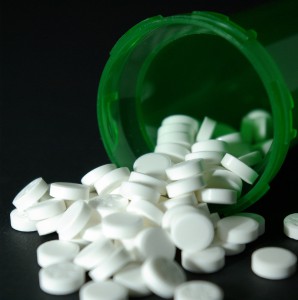By Anonymous, December 03 2015
 A new report, "Reducing Teen Substance Misuse: What Really Works," calls attention to the rising rate of teen overdose fatalities in the United States, the role of prescription painkillers, as well as research-based solutions for prevention and treatment. The report, supported by a grant from the Conrad N. Hilton Foundation, was authored and produced by Trust for America's Health (TFAH), a Washington D.C.-based nonprofit, non-partisan organization with a focus on public health policy and community prevention and treatment strategies.
A new report, "Reducing Teen Substance Misuse: What Really Works," calls attention to the rising rate of teen overdose fatalities in the United States, the role of prescription painkillers, as well as research-based solutions for prevention and treatment. The report, supported by a grant from the Conrad N. Hilton Foundation, was authored and produced by Trust for America's Health (TFAH), a Washington D.C.-based nonprofit, non-partisan organization with a focus on public health policy and community prevention and treatment strategies.
Significant Increase in Teen Overdose Fatalities
TFAH finds that youth drug overdose fatalities, among 12 to 25 year-olds, more than doubled in 35 states over the past ten years, particularly among young men and boys. Fatality rates for youth overdose more than doubled in 18 states, more than tripled in 12 states, and more than quadrupled in five states (Kansas, Montana, Ohio, Wisconsin and Wyoming). Analyses reveals that, while no state had a youth overdose death rate over 6.1 per 100,000 before 2001, 33 states were above 6.1 per 100,000 deaths by the year 2013.
Rising Prescription Drug Misuse and Heroin Use
The significant national increase in substance overdose fatalities in 18 to 25 year-olds is predominantly connected to prescription painkiller misuse and addiction, which has also contributed to the increasing use of heroin in this population, according to TFAH researchers, who report:
- Teens increasingly turn to heroin as an inexpensive, easy to access alternative to prescription painkillers
- Use of heroin among 18 to 25 year-olds has more than doubled over the past decade
- 45 percent of heroin users are also addicted to prescription painkillers
Prevention and Treatment Strategies: What Really Works
Upon scoring states on how well they currently limit access, support improved well-being, and how they support improved counseling, early intervention and treatment and recovery support (i.e. SBIRT) -- TFAH finds that 24 states lack effective policies and programs to prevent and reduce substance misuse in youth; and Minnesota and New Jersey were the only states to score 10 out of 10 on key indicators, developed in consultation with substance misuse prevention experts. Idaho, Louisiana, Mississippi, and Wyoming tied for the lowest scores, receiving 3, out of 10 possible.
Emphasizing the need for a full-continuum-of-care, Reducing Teen Substance Misuse provides research-based suggestions for how states may prevent and reduce substance misuse; the report includes these recommendations:
- Prevention First: States should have a network of experts and resources in support of evidence-based approaches and programs, implemented in collaboration with the local community.
- Strategic Investment: States should strategically invest in evidence-based programs known to effectively reduce risk of substance misuse and other problems specifically experienced by teens and young adults.
- Multisector Collaboration: Communities should collaborate with schools to collect data on community needs and select programs to match those needs, and improve accountability.
- Evidence-Based and Sustained School-Based Programs: Ineffective programs should be abandoned and, efforts should be renewed for evidence-based and sustained school-based programs.
- Screening, Brief Intervention, Referral to Treatment (SBIRT): Academic and healthcare professionals should incorporate SBIRT as routine practice, for a positive impact on youth.
- Increase Funding Support: States should increase funding support for sustainable treatment and recovery for teens with mental health and substance use issues.
These recommendations also align with the Reclaiming Futures approach and model, and we encourage members of our sites and national community to share this report, and to contribute to a dialogue of how these recommendations may be applied nationally at a local and state level.
See the full report here.
Topics: Adolescent Mental Health, Adolescent Substance Abuse Treatment, Juvenile Justice Reform, News, Positive Youth Development, SBIRT, treatment
Updated: September 23 2020
